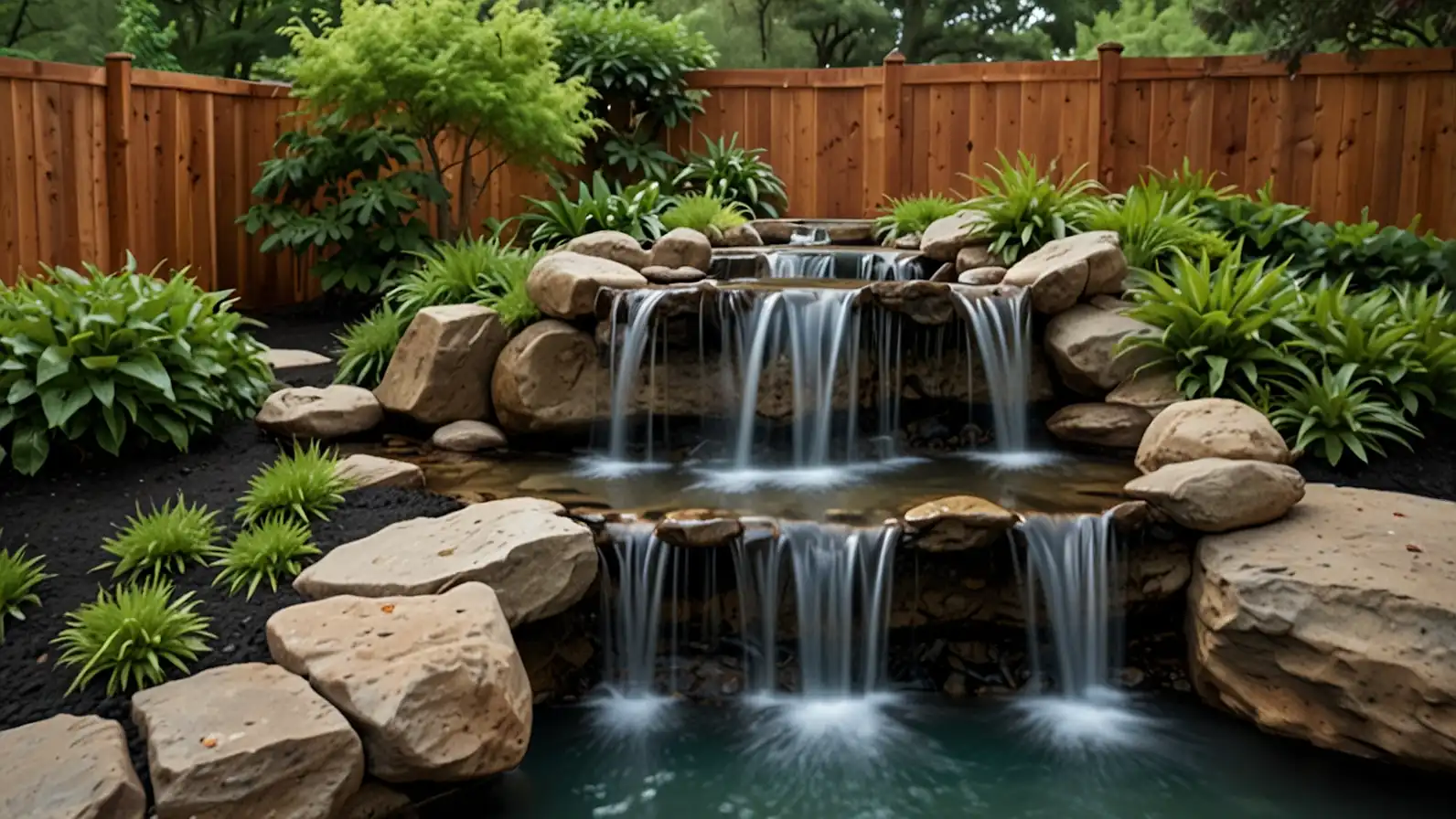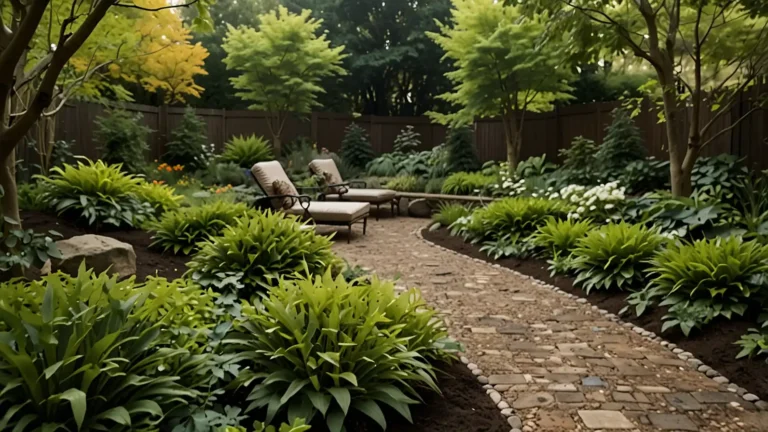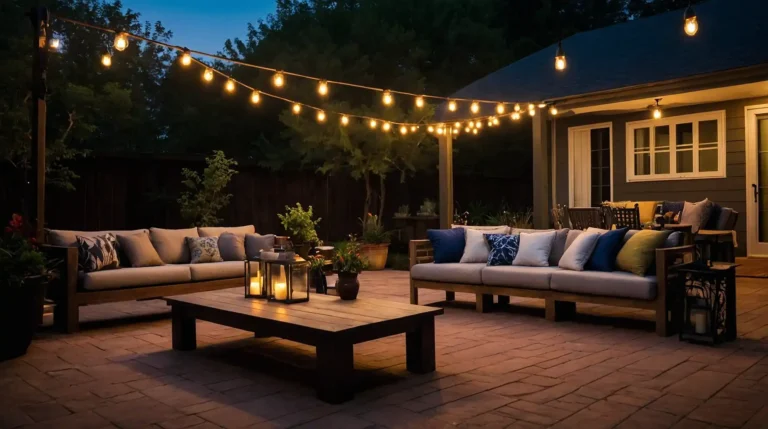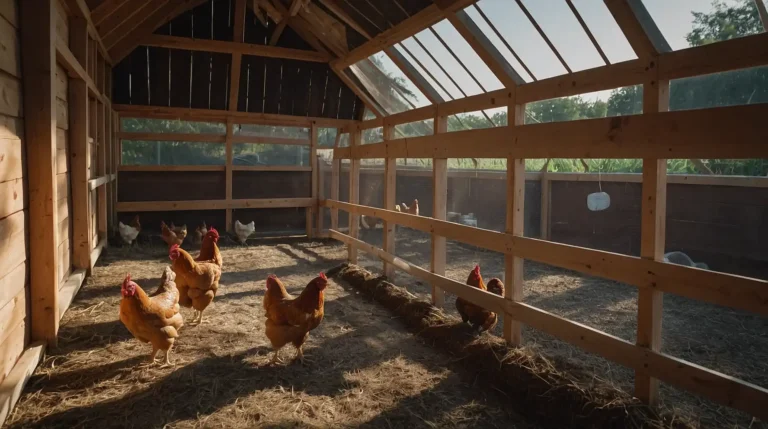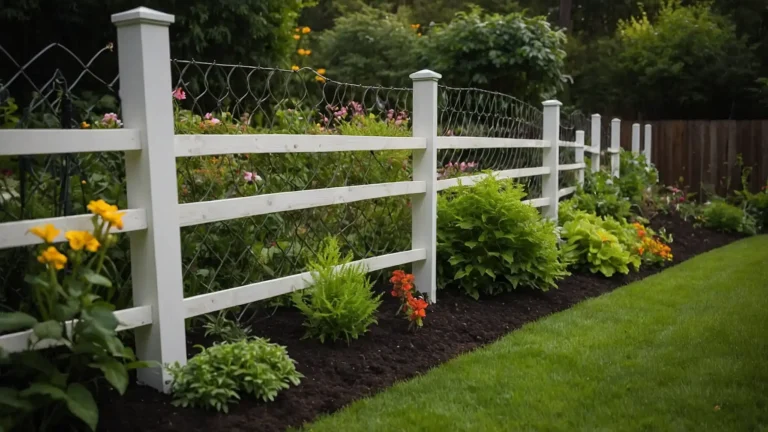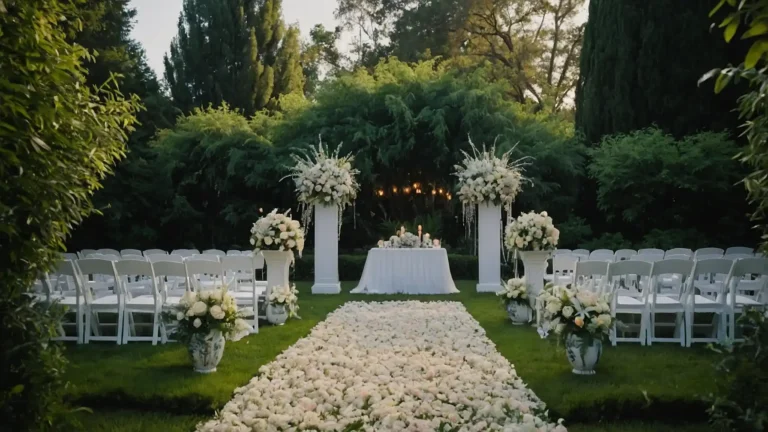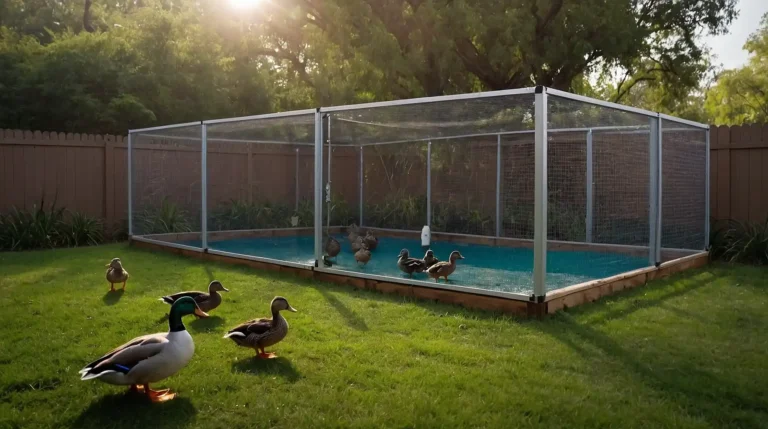17 Small Garden Waterfalls Ideas
Small garden waterfalls transform ordinary outdoor spaces into tranquil retreats that soothe your senses daily.
The gentle sound of flowing water masks traffic noise while attracting beneficial wildlife to your yard.
You don’t need extensive landscaping experience to create these peaceful features.
Most projects require basic tools and materials available at garden centers.
These inspiring waterfall ideas will help you design the perfect water feature for your space and budget.
1: Container Waterfall Tower
Stack decorative pots or planters to create a cascading water feature.
You’ll achieve multiple tiers without extensive construction or permanent landscape changes.
Drill drainage holes between each container level for proper water flow. Position the pump in the bottom reservoir to circulate water continuously.
Choose weather-resistant materials like ceramic or fiberglass. This portable design allows seasonal repositioning and easy winter storage when needed.
2: Natural Stone Stack
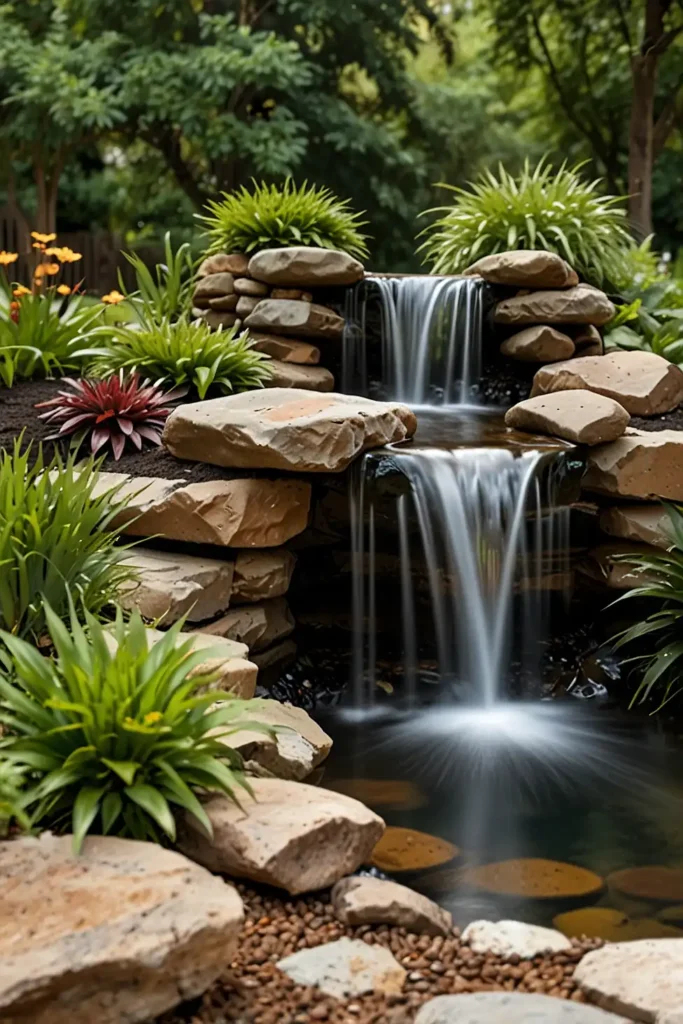
Build a rustic waterfall using local fieldstones or river rocks. You’ll create an authentic appearance that blends seamlessly with your existing landscape design.
Layer stones with slight backward angles to control water direction. Mortar isn’t necessary if you balance rocks carefully for stability.
Add aquatic plants between stone crevices for natural beauty. This organic approach develops character as moss and vegetation establish naturally.
3: Wall-Mounted Spill Feature
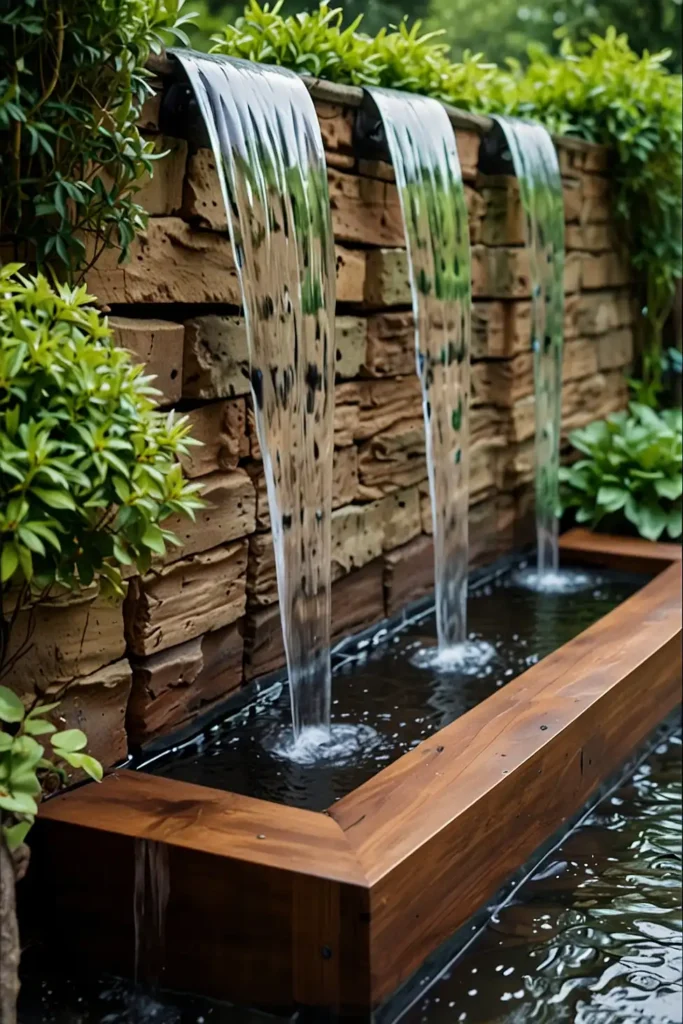
Install a wall-mounted water spout that flows into a ground-level basin. You’ll save valuable garden space while adding vertical interest to blank walls.
Mount the reservoir tank behind or above the spout location. Gravity feeds create natural water pressure without complex pump systems.
Choose materials that match your home’s exterior style. This space-efficient design works perfectly for narrow side yards and small patios.
4: Solar-Powered Cascade
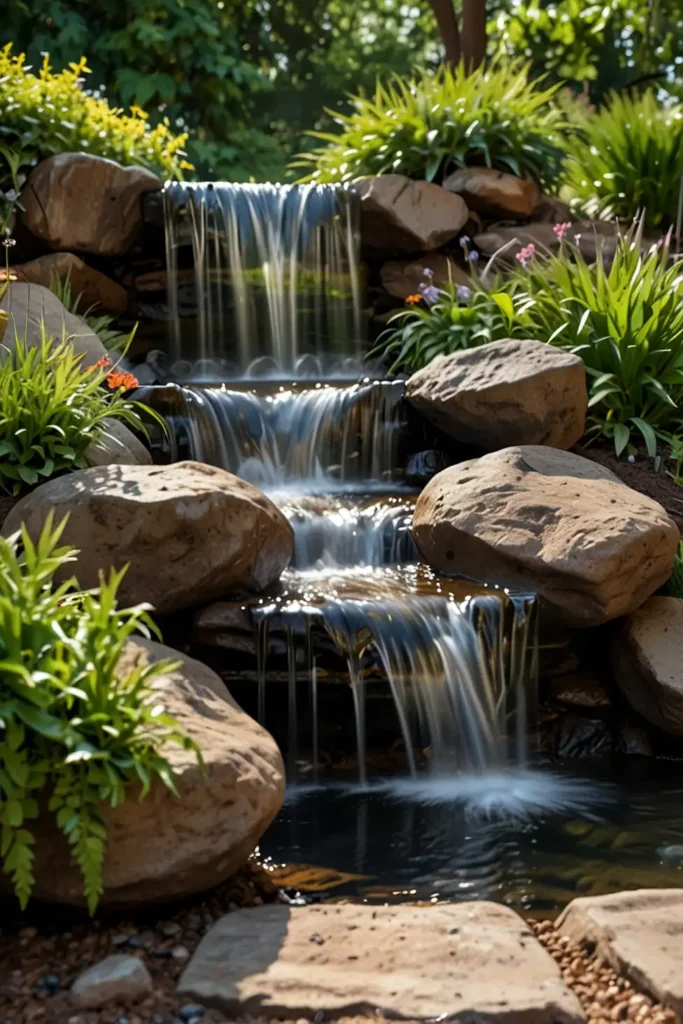
Create an eco-friendly waterfall using solar panel technology for pump operation.
You’ll enjoy water features without increasing electricity bills or requiring electrical connections.
Position solar panels in full sun locations for optimal performance. Battery backup systems maintain operation during cloudy weather periods.
Start with smaller pumps to match solar power output. This sustainable approach operates independently while reducing environmental impact significantly.
5: Tiered Rock Garden
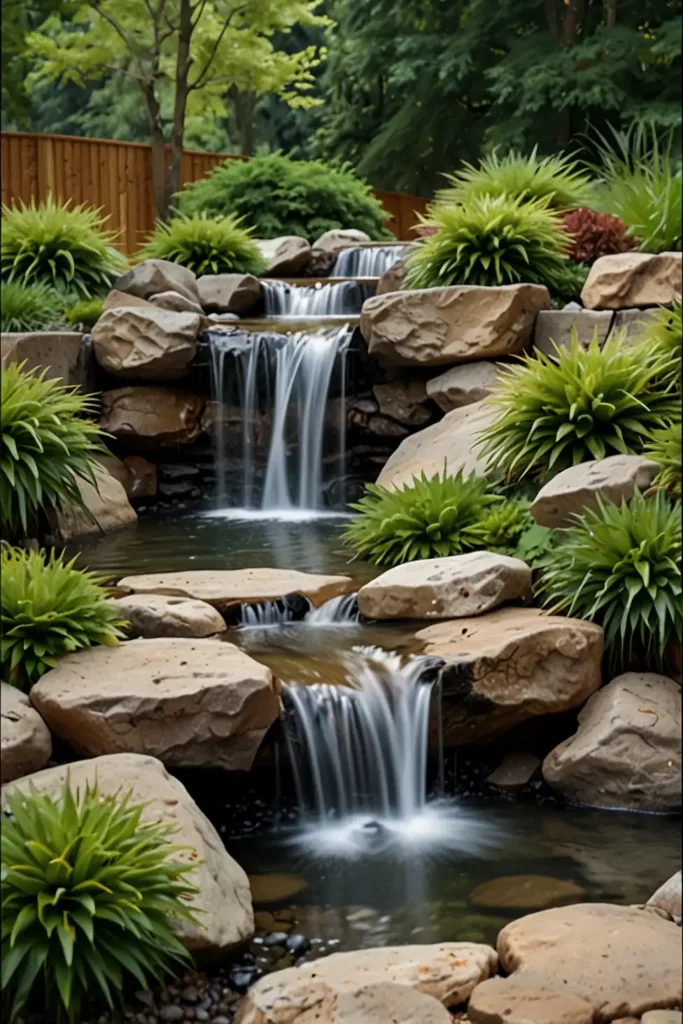
Integrate a waterfall into existing rock garden landscapes naturally. You’ll enhance established plantings while adding soothing water sounds to quiet spaces.
Use existing elevation changes to create natural flow patterns. Minimal excavation preserves established plant roots and soil structure.
Plant water-loving species near the base for lush growth. This integration approach creates cohesive design that feels intentional and mature.
6: Bamboo Fountain Feature
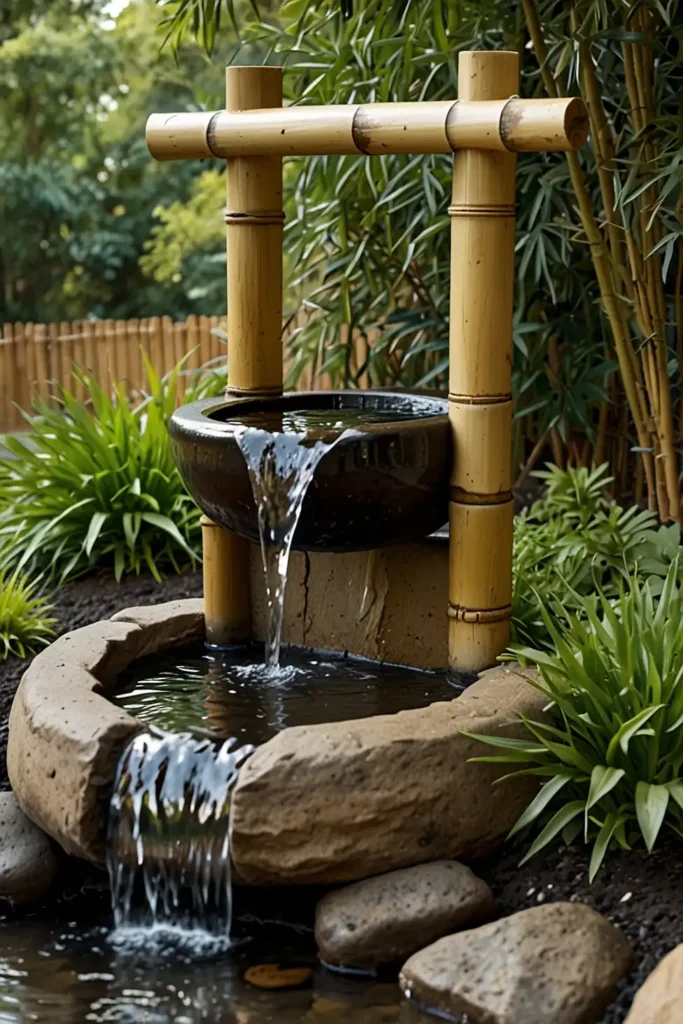
Construct a Japanese-inspired waterfall using bamboo poles and natural materials. You’ll add zen aesthetics while maintaining simple construction requirements.
Cut bamboo at joints for natural water collection points. Seal connections with food-safe materials to prevent decay and leakage.
Position among shade plants for authentic garden integration. This cultural design element creates peaceful meditation spaces for daily relaxation.
7: Recirculating Basin System
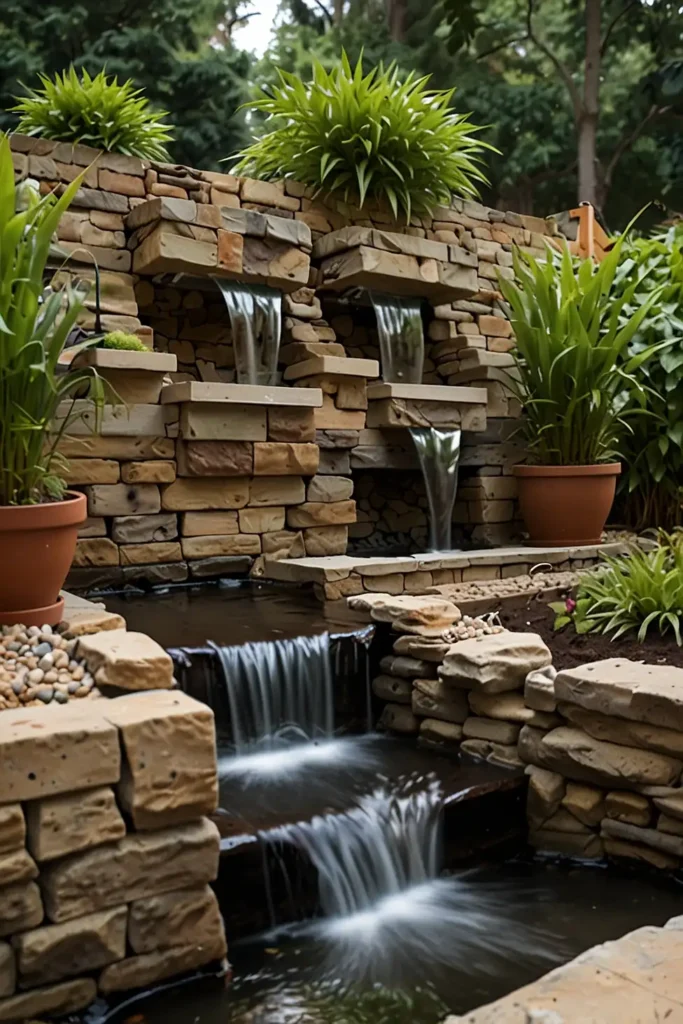
Build a self-contained waterfall with hidden pump and filtration systems.
You’ll maintain clear water while minimizing maintenance requirements throughout seasons.
Include biological and mechanical filtration for water quality. Proper circulation prevents stagnation and reduces algae growth naturally.
Size pumps appropriately for your waterfall height and flow. This closed-loop system conserves water while providing consistent performance.
8: Miniature Pond Waterfall
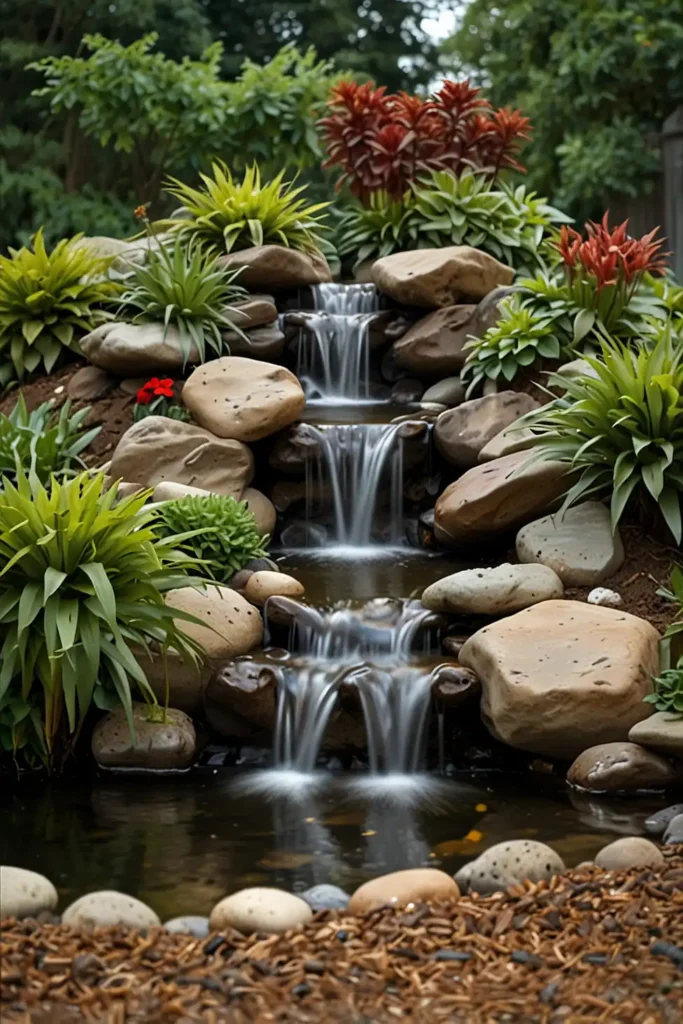
Add a small waterfall to existing pond features for enhanced beauty. You’ll increase oxygen levels while creating focal points that attract wildlife.
Position the waterfall at the pond’s shallow end naturally. This placement creates circulation patterns that benefit fish and plant health.
Use pond liner extensions to prevent water loss. Proper installation ensures efficient operation without constant water level monitoring.
9: Pondless Disappearing Design
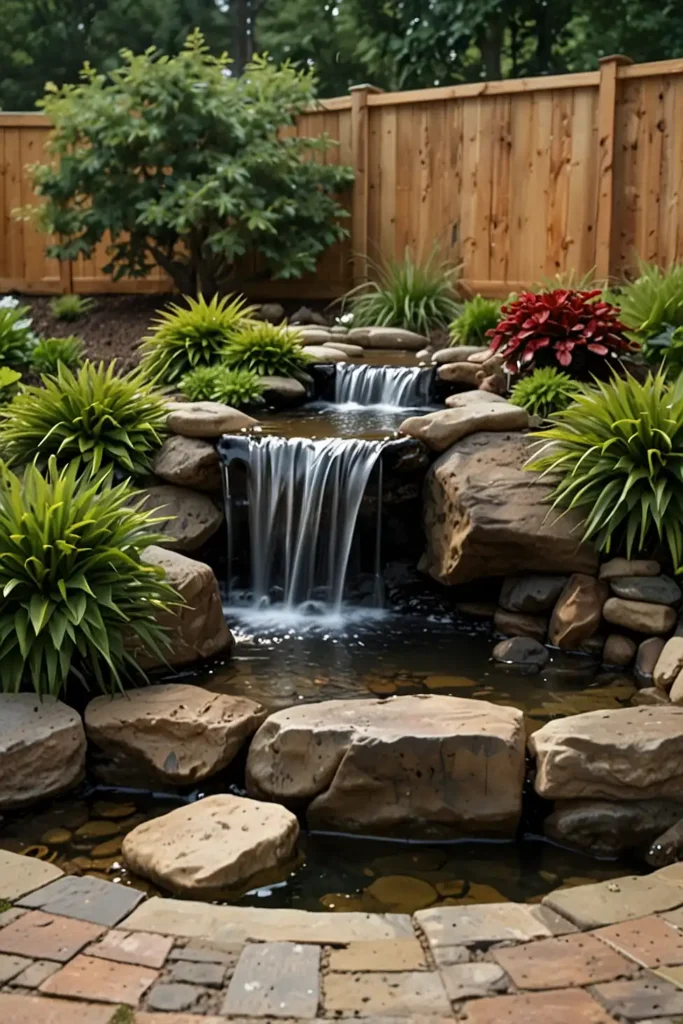
Create a waterfall that disappears into underground reservoirs without visible standing water.
You’ll enjoy water sounds while eliminating drowning hazards for children.
Install gravel beds over hidden water collection systems.
The water vanishes mysteriously while pumps recirculate it continuously upward.
This design requires less maintenance than traditional ponds.
Reduced surface area minimizes debris accumulation and algae growth problems.
10: Copper Spillway Feature
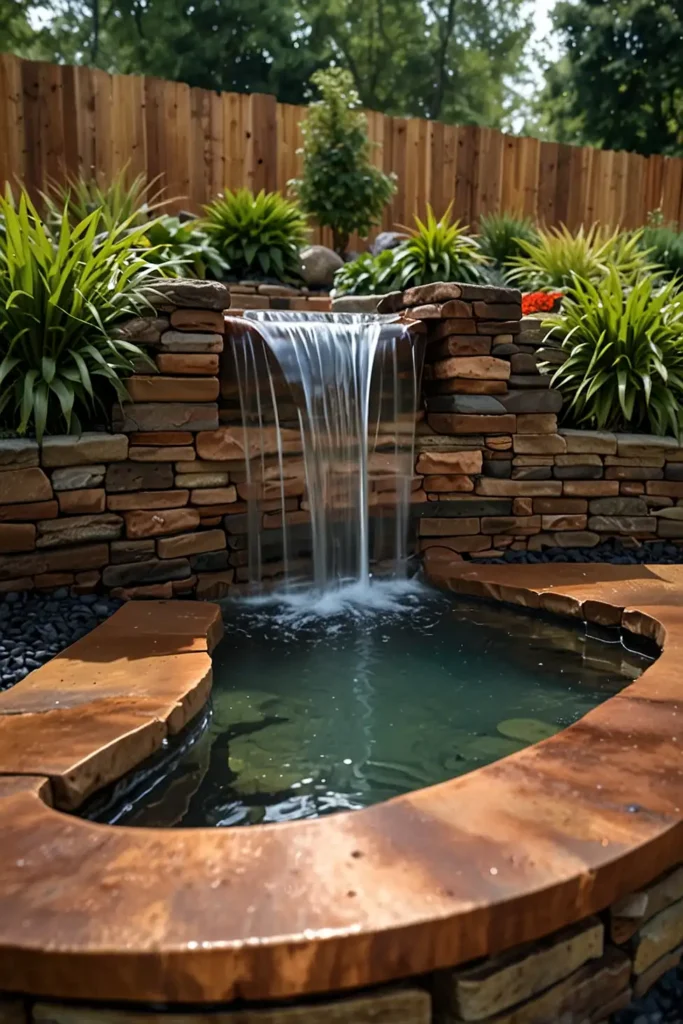
Install decorative copper spillways for elegant water flow patterns. You’ll add metallic accents that develop beautiful patina over time naturally.
Choose spillway widths that match your desired water volume. Wider openings create sheet effects while narrow ones produce streams.
Position catch basins directly beneath for efficient water collection. This refined approach adds contemporary styling to modern garden designs.
11: Railroad Tie Terraces
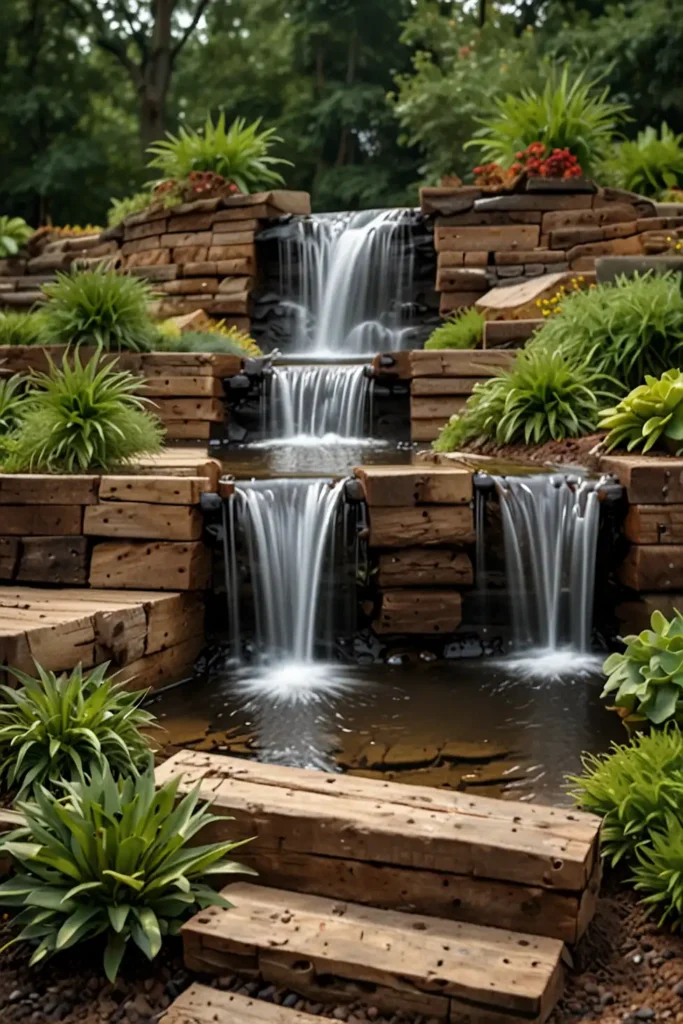
Use weathered railroad ties to create rustic waterfall terraces affordably. You’ll achieve substantial visual impact while recycling durable materials effectively.
Level each tier carefully for proper water distribution patterns. Slight forward angles direct water flow toward desired collection points.
Line with pond liner to prevent soil erosion. This sturdy construction withstands weather while requiring minimal ongoing maintenance investment.
12: Ceramic Vessel Cascade
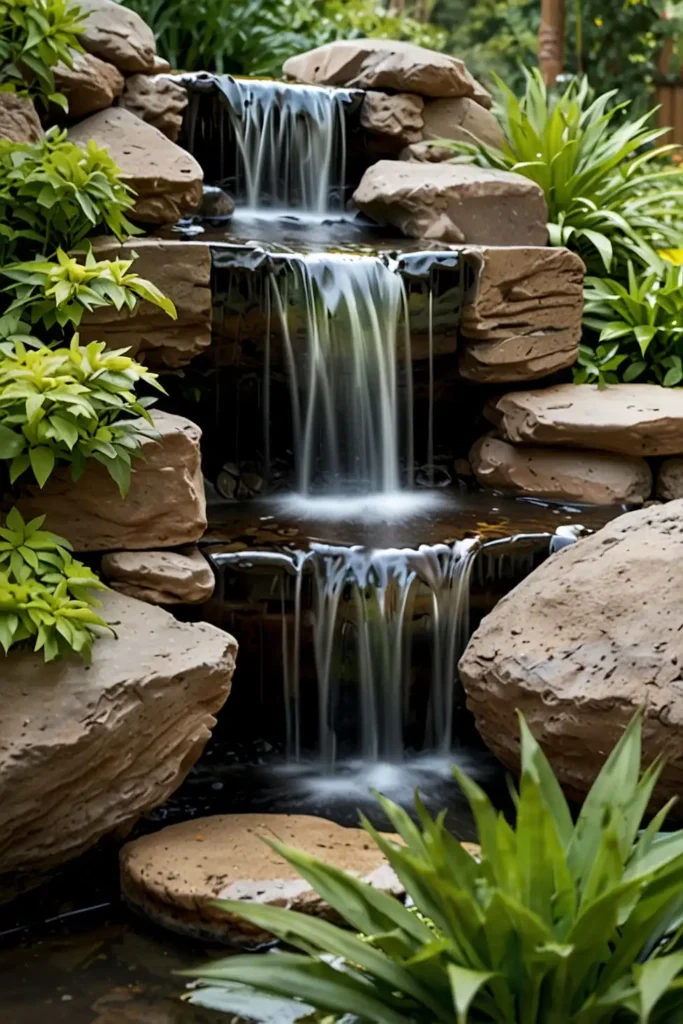
Arrange decorative ceramic vessels in descending heights for artistic water flow. You’ll create sculptural elements that function as beautiful garden art.
Drill overflow holes at consistent heights for level water. Position vessels to create interesting splash patterns and sound variations.
Choose frost-resistant ceramics for year-round outdoor use. This artistic approach combines functionality with aesthetic appeal that photographs beautifully.
13: LED-Lit Evening Display
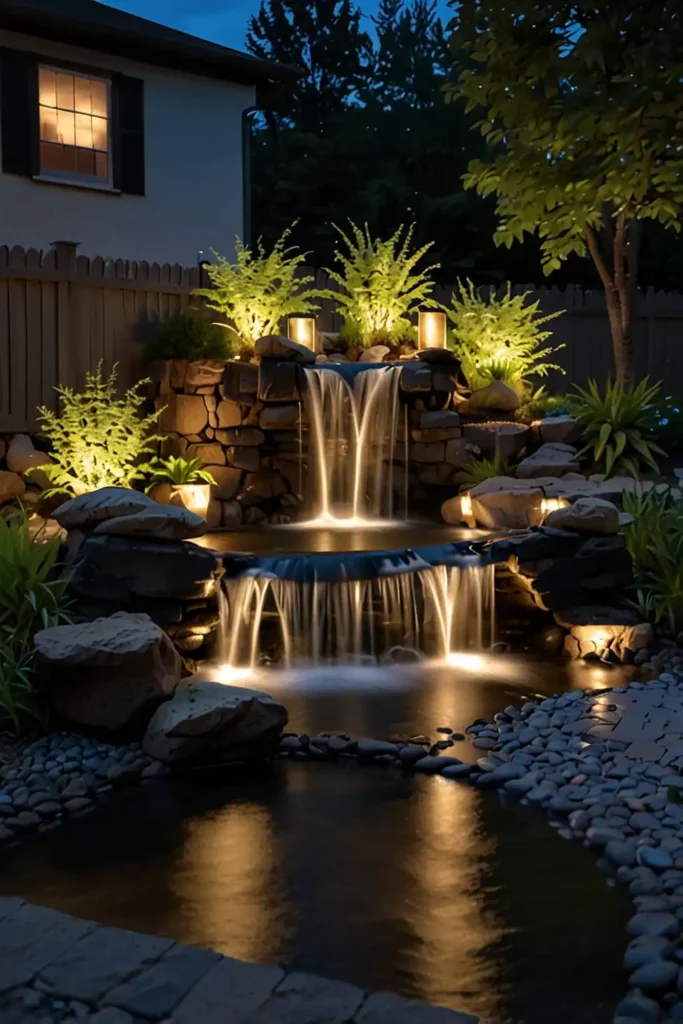
Install underwater LED lighting for stunning nighttime waterfall illumination.
You’ll extend enjoyment hours while creating magical evening garden atmospheres.
Choose color-changing options for seasonal variety and special occasions. Warm white lights provide elegant ambiance for everyday use.
Use low-voltage systems for safety near water features.
Proper electrical installation ensures reliable operation while preventing safety hazards.
14: Modular Block Construction
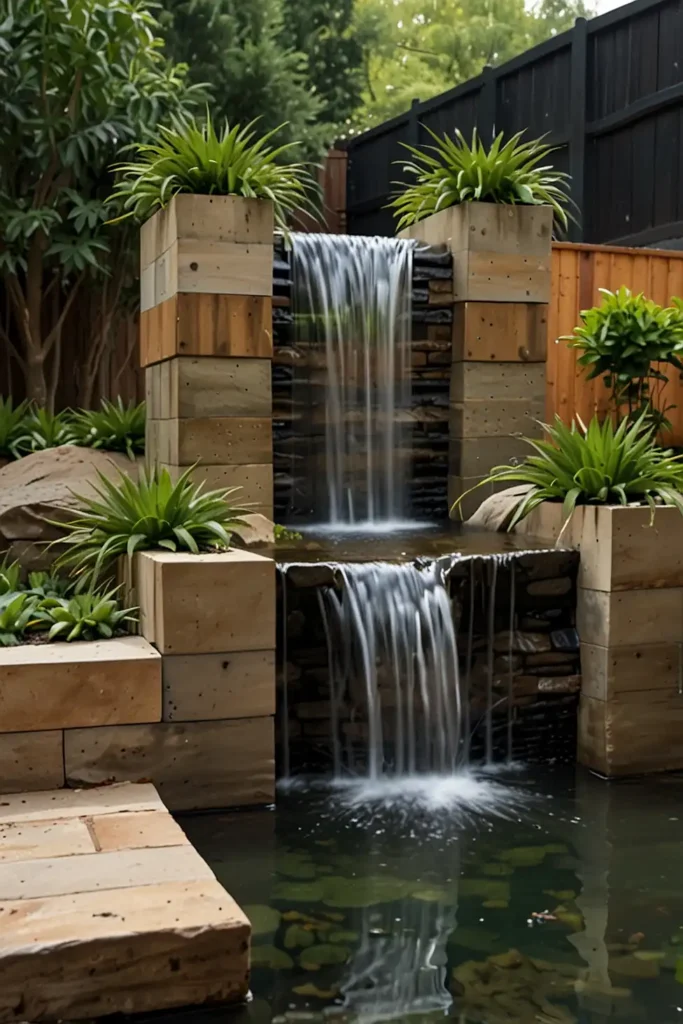
Build waterfalls using interlocking retaining wall blocks for easy installation.
You’ll achieve professional results without specialized masonry skills or tools.
Follow manufacturer guidelines for proper base preparation and installation. Level foundations ensure stable construction that lasts for years.
Include drainage behind walls to prevent frost damage.
This systematic approach produces consistent results while simplifying construction processes.
15: Hanging Garden Integration
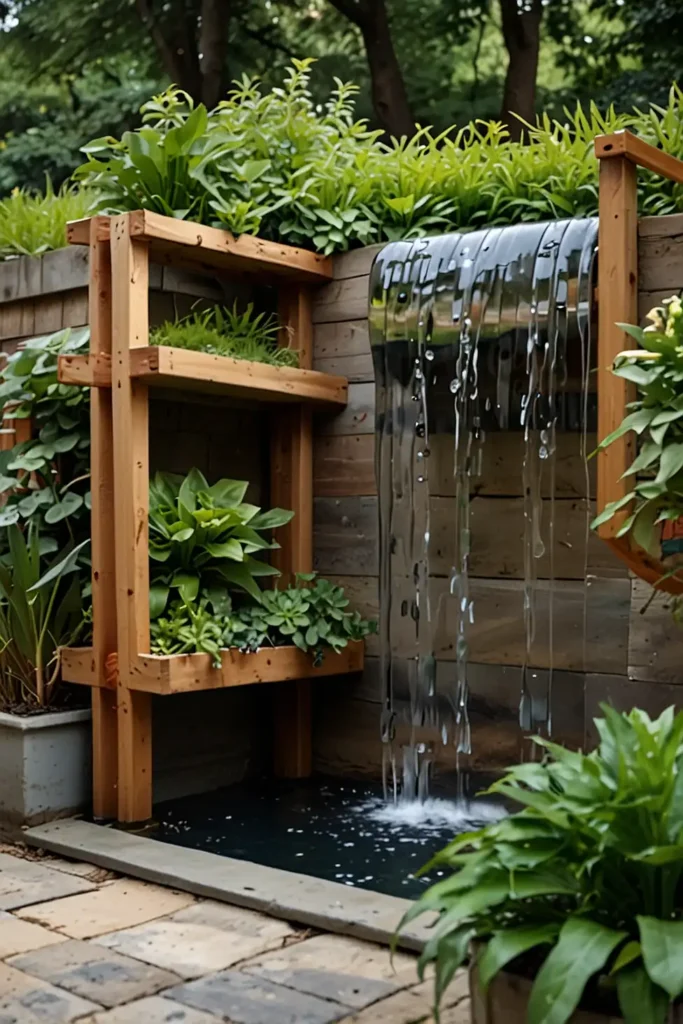
Combine hanging planters with waterfall features for space-saving garden solutions.
You’ll maximize vertical growing space while adding water elements naturally.
Position planters to catch and redirect water flow. This irrigation method waters plants while creating cascading effects simultaneously.
Choose plants that thrive in moist conditions naturally.
This dual-purpose design serves multiple functions while conserving valuable garden space.
16: Seasonal Display Features
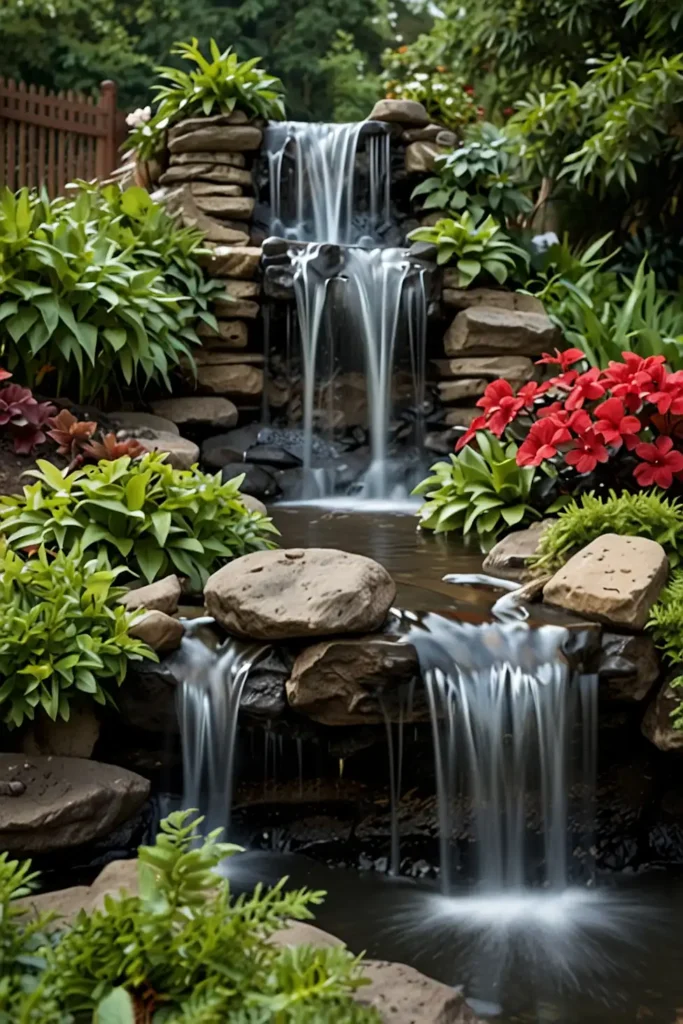
Design waterfalls that adapt to seasonal decorating themes throughout the year.
You’ll maintain year-round interest while celebrating holidays and seasonal changes.
Include removable elements for easy theme modifications.
Seasonal plants and decorations refresh the display without permanent alterations.
Plan winter operation in cold climates carefully.
Proper winterization prevents freeze damage while maintaining structural integrity for spring startup.
17: Wildlife Habitat Creation
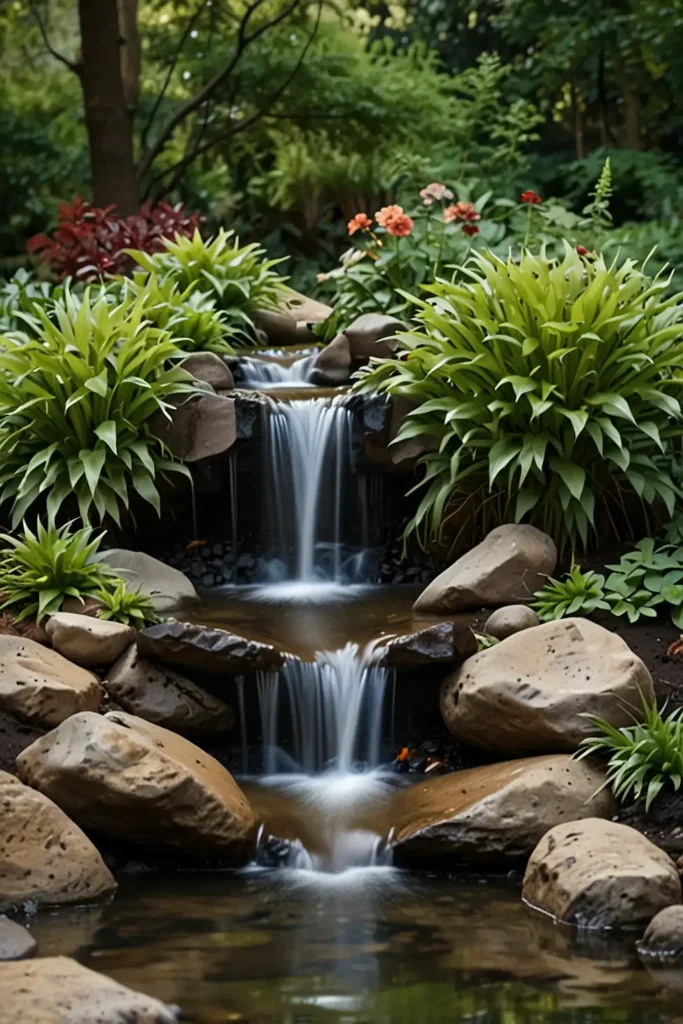
Design waterfalls specifically to attract birds, butterflies, and beneficial insects. You’ll support local ecosystems while enjoying increased wildlife activity.
Include shallow areas for safe drinking and bathing. Different water depths accommodate various species’ needs and preferences naturally.
Plant native species around water features strategically.
This habitat approach creates sustainable environments that require minimal intervention once established.
Conclusion
These waterfall ideas prove that any garden can accommodate peaceful water features that enhance outdoor living experiences beautifully.

